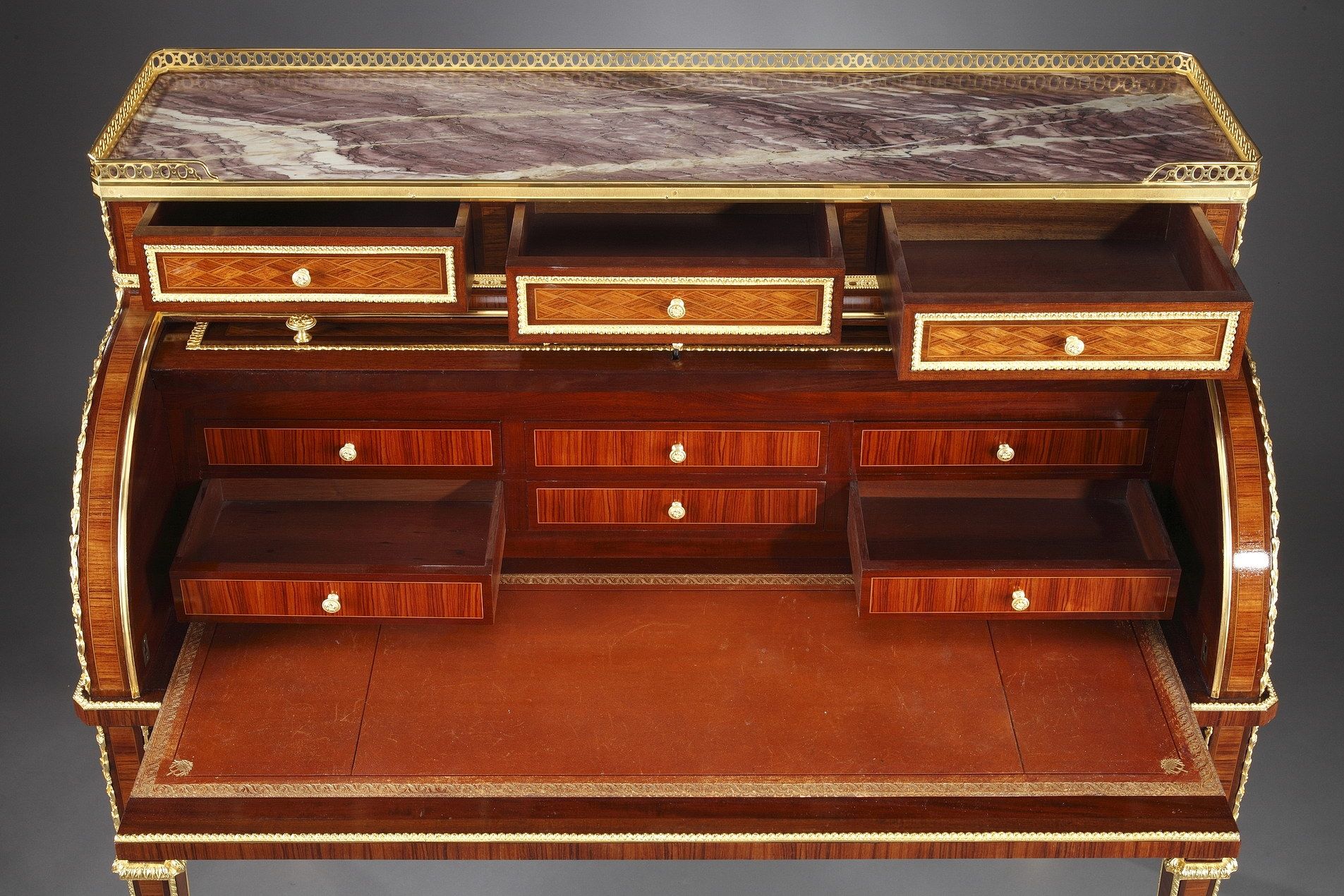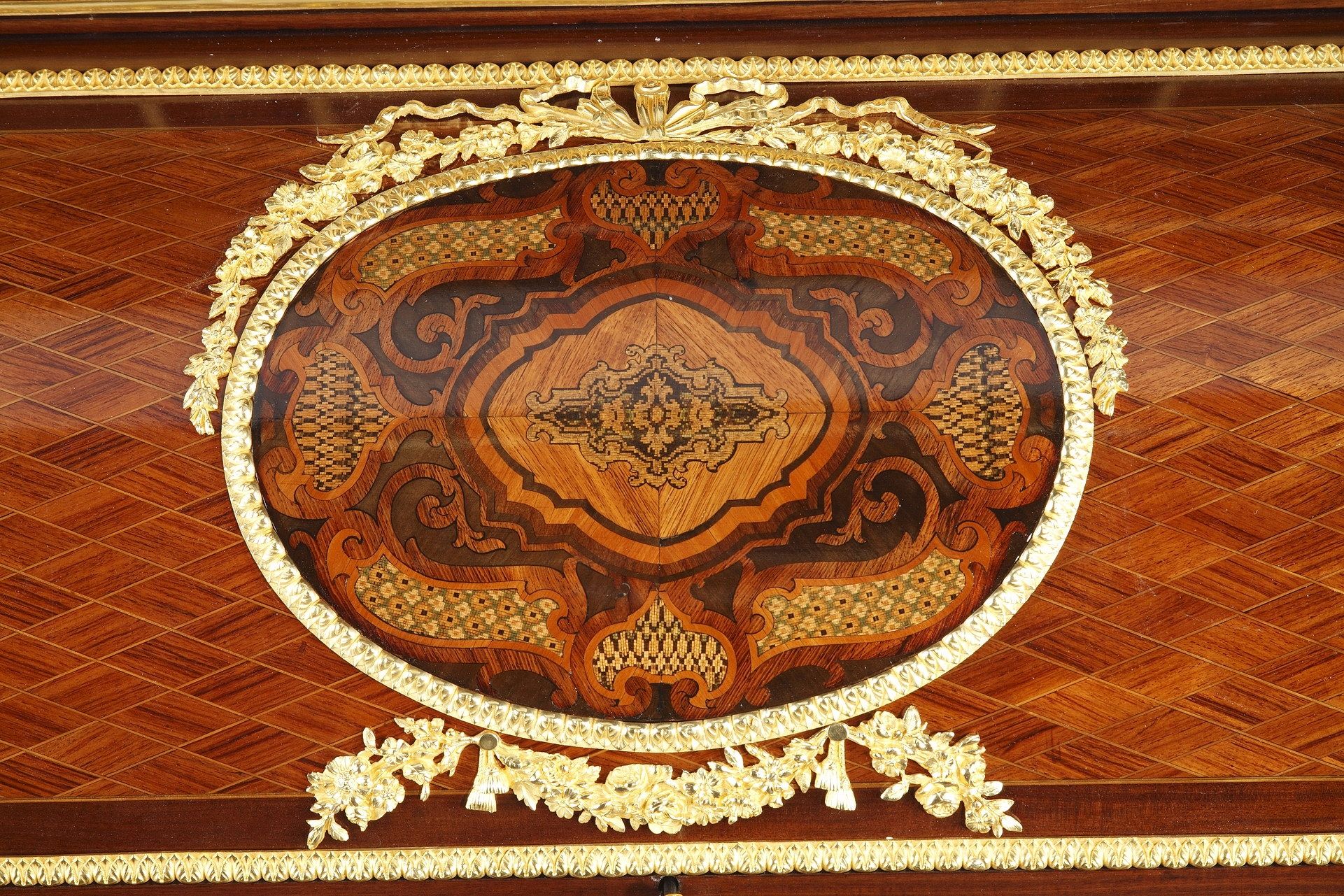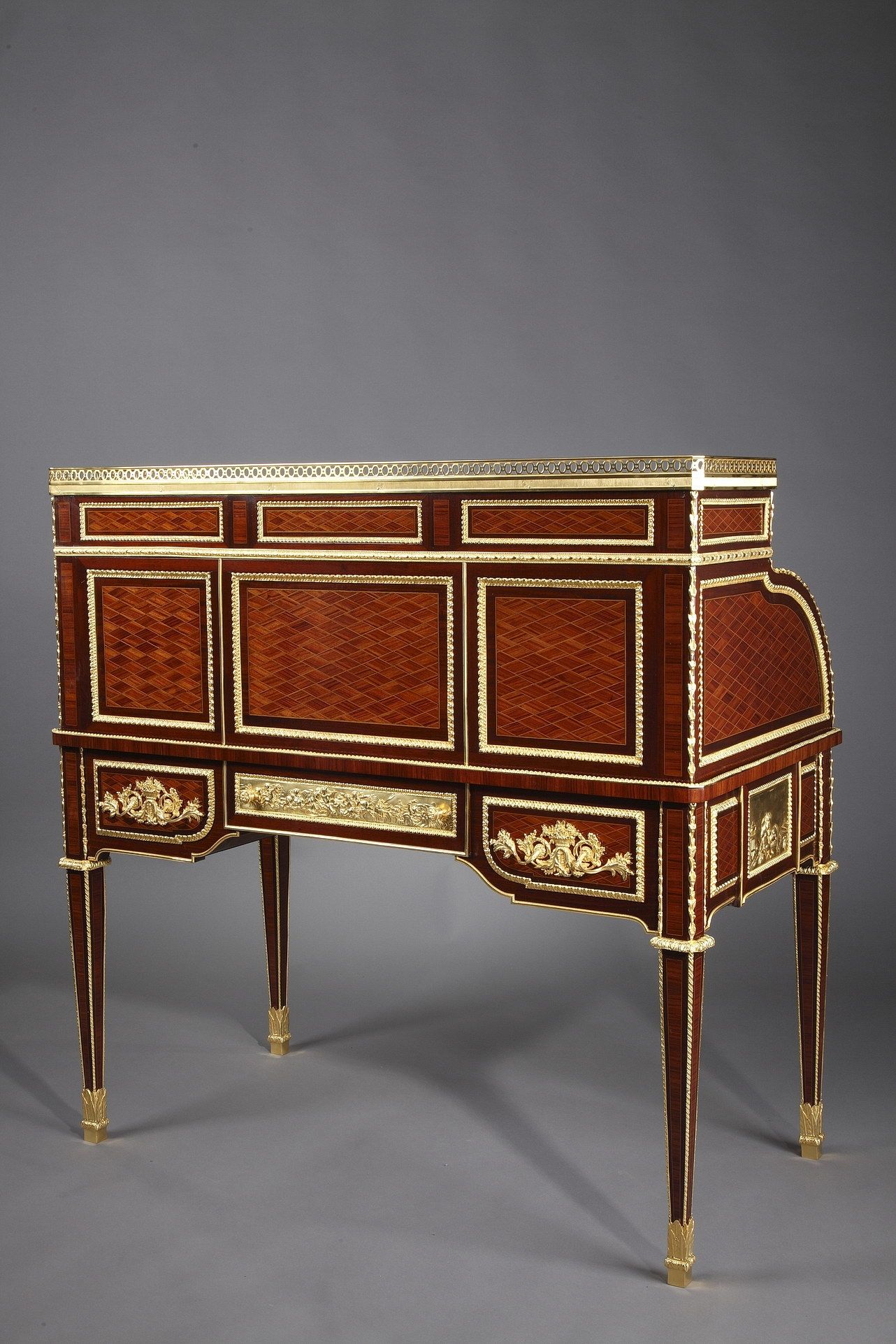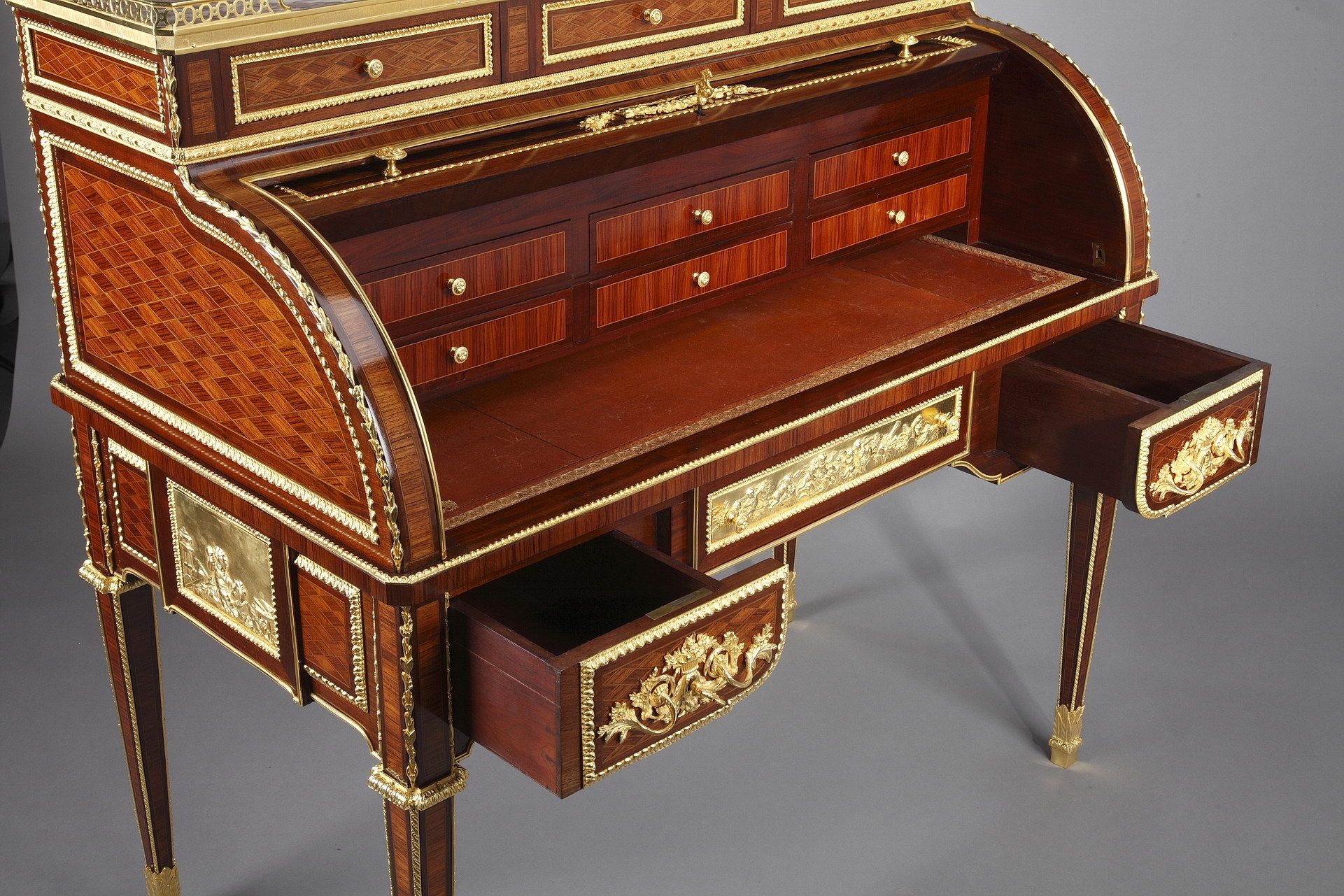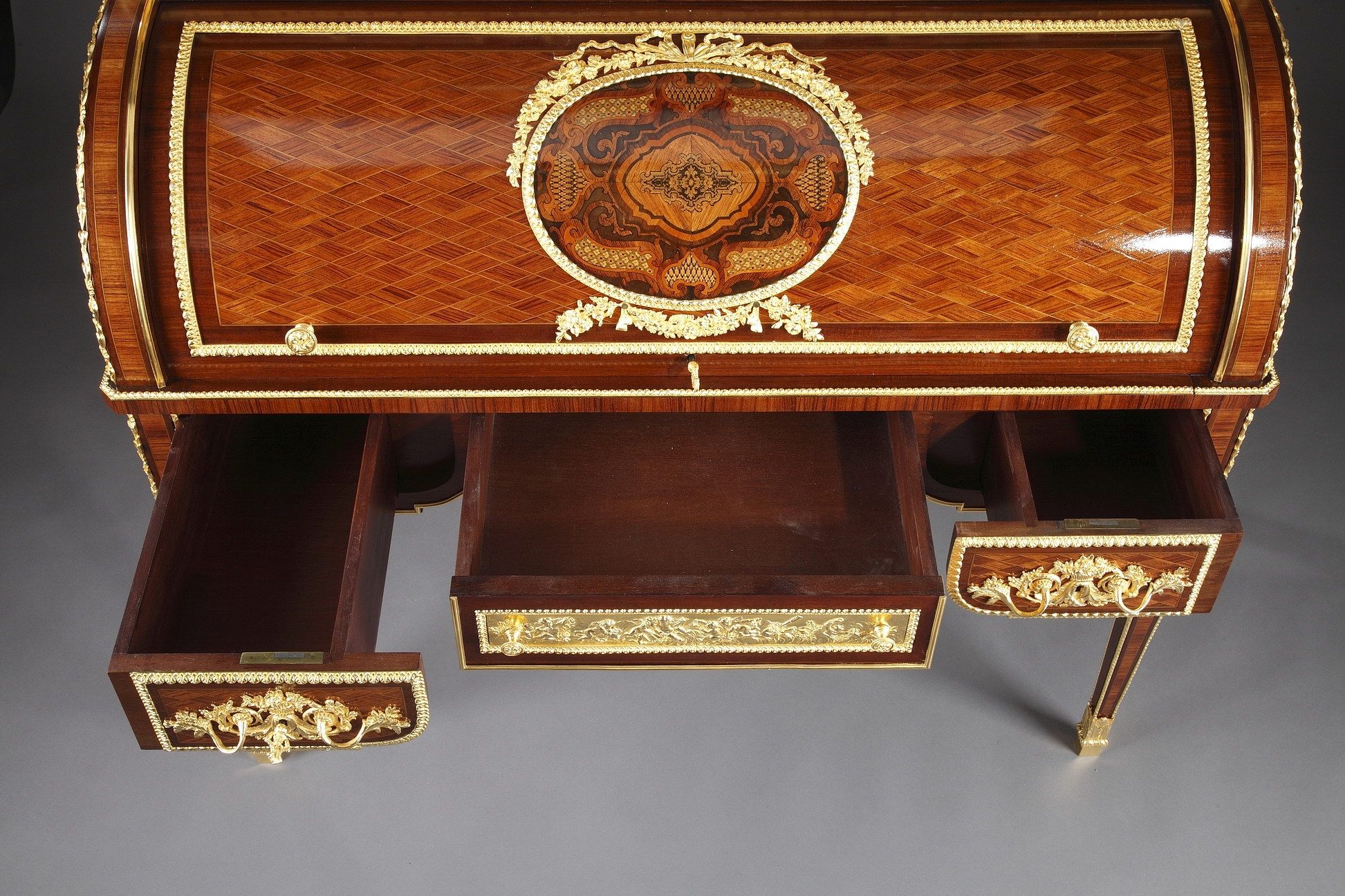Cylinder secretary after Riesener
10.12.20
The cylinder desk: an 18th-century invention
The secretary desk is a piece of office furniture created in the mid-18th century, during the reign of Louis XV. It features drawers and compartments at the top, and sometimes hidden compartments for secret documents. It was initially known as a "secretary in a cabinet." The lower section, extending from the top, is closed by two doors, concealing drawers or a shelf that divides the space in two. The secretary desk is made of natural wood, veneer, or marquetry, and is adorned with numerous embellishments. Created after the commode, it became one of the most frequently produced pieces of furniture after it and quickly underwent practical modifications.
The cylinder desk , or secretary , is a new type of writing desk, created around 1760 by Jean-François Oeben (1721-1763) , cabinetmaker to Louis XV and pupil of Charles-Joseph Boulle, who became famous for his mechanical furniture. The cylinder desk is closed by a quarter-cylinder lid with flexible slats, which covers compartments and drawers. Opening the cylinder can advance a leather-covered writing surface, thus increasing the work area.
 Cylinder desk after a Riesener model
Cylinder desk after a Riesener model
The most famous example of this type of furniture is the celebrated monumental cylinder desk for King Louis XV , now in the Palace of Versailles. Riesener began its construction in 1760 with the building of the frame, the design of the secret mechanisms, and the plaster casting of the bronze mounts. The desk, completed by his successor, Riesener, was delivered in 1769.
Jean-Henri Riesener, cabinetmaker to the Crown
Riesener received his master craftsmanship in 1768 and produced over 700 pieces of furniture for the Court. In 1769, he signed and delivered the roll-top desk originally designed by Oeben, whose assistant he had been. He created prestigious pieces for the King and Queen, as well as numerous pieces of furniture featuring secret compartments that could be accessed by activating mechanisms. As Oeben's apprentice, he had learned to create furniture with complex mechanisms and to practice marquetry.
Riesener produced several roll-top desks. Among the best known is the one for Thierry de Ville in 1784, which incorporates the mechanism of the king's desk and the forms of the Louis XV style. He also created secretaries with much more neoclassical forms, reflecting the evolution towards the Louis XVI style, such as the roll-top secretary of Marie Antoinette at the Tuileries , which inspired our desk.
Riesener, the cylinder desk for Marie Antoinette
In 1784, Marie Antoinette furnished a small apartment in the Tuileries, for which Jean-Henri Riesener delivered several pieces of furniture including a chest of drawers, a night table and a dressing table for the bedroom, as well as the roll-top desk for the inner study, currently kept at the Louvre Museum .
This piece of furniture, veneered in amaranth, sycamore, and rosewood, comprises a three-drawer desk and a cylinder-topped upper section. The desk panels are decorated with a marquetry lozenge pattern. At the center of the cylinder, a garland of flowers, laurel branches, and bronze ribbons frames a marquetry trophy illustrating the attributes of Poetry . This exceptional decoration is complemented by numerous gilt bronze mounts, including four bas-reliefs representing three allegories of the arts : Music , Painting , and Sculpture .
The roll-top desk from Galerie Atena, a replica of Riesener's secretary desk
The Galerie Atena secretary desk replicates the desk body of Riesener's piece, with its three drawers and allegorical bas-relief decoration, as well as its tapered legs. The upper cylinder section, however, is slightly modified. The center of the cylinder is inlaid with an abstract decorative motif, and the upper section, beneath the gallery, features three additional drawers. The interior contains six small drawers and no other storage space. This model—an interpretation of Riesener's famous cylinder secretary—is attributed to the Beurdeley firm.
The Beurdeleys: a successful dynasty
The
Beurdeley family was one of the most important furniture-making dynasties of the 19th century, operating for three generations from 1818 to 1895. They became renowned for the quality of their gilt bronzes and their choice of precious materials for the manufacture and ornamentation of their furniture and objets d'art. During the Second Empire, Louis-Auguste-Alfred Beurdeley was one of the principal suppliers to the Imperial Furniture Repository and provided furniture to the royal houses of Europe. He also received commissions from Napoleon III and Empress Eugénie, as well as numerous awards at World's Fairs.
Alfred-Emmanuel-Louis Beurdeley succeeded his father in 1875 and specialized in manufacturing luxury furniture copied from antique pieces in the Mobilier National collection. He produced numerous replicas of well-known models, including, most likely, Riesener's desk for Marie Antoinette. He continued this successful business until 1895, when the Beurdeley firm closed. Its extensive inventory of over 3,900 pieces of furniture and objets d'art was then dispersed in five auctions.



